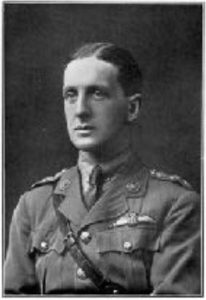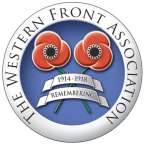Royal Air Force

Hubert Frank Fisher was born on 29 September 1884 at Gloucester, the younger son of John and Esther Fisher. Educated at the King’s School, Gloucester; Wycliffe College, Stonehouse and Bedford Grammar School; he undertook a two – year apprenticeship at Braintree, Essex in 1901. Upon completion, he studied mechanical and electrical engineering at King’s College, University of London.
At the age of 21 he sailed to Argentina and in 1906 joined Agar, Cross & Company of Buenos Aires.
Between 1907 and 1910 he was in charge of the installation of the company’s ice-making and cold storage plants throughout the country. In 1910 he became the Chief Engineer for Pedro Storm & Company, importers of ice-making machines, various types of engines, dynamos and accumulators.
When war broke out in 1914 Hubert resigned his position and paid for his own flying instruction. He was soon awarded his pilot’s diploma by the Aero Club of Argentina, the first Briton to receive this. In August 1915, Hubert presented himself to the British Embassy in Buenos Aires to volunteer his services as a pilot with the Royal Flying Corps (RFC). In February 1916 he and wife Marion (a fellow ex-patriot aviator) arrived back in England and he joined the RFC on 12 June: seven days later he was in France. In December of that year he became a Flight Commander (Temporary Captain) and was engaged in bombing operations.
His time on the Western Front was curtailed by a nervous condition affecting his eyes and he was invalided home, to a convalescent hospital in Cornwall. Anxious still to play a part in the war, when released from hospital he became a flying instructor at Castle Bromwich, and rose to become a Chief Instructor (Temporary Major) on 22 September 1917.
He had experience of flying about a dozen aircraft types and went on to spend time with several Reserve Squadrons and the No 2 School of Military Aeronautics, Oxford. An attachment to the Royal Canadian Air Force followed and an appointment as Major and Chief Instructor and Lecturer at the No 4 School of Aeronautics, University of Toronto.
He returned to England on 4 January 1919 and was due to due to start work with the Sopwith Aeroplane Company covering Brazil and Argentina, when he fell ill, probably a victim of the influenza pandemic and died aged 34 of pneumonia on 22 March 1919, at the RAF Hospital, Eaton Square, London. He was awarded the Order of the British Empire (Military Division) but the award was not published until shortly after his death.
Hubert’s funeral on 26 March was held at St Lawrence Church, Barnwood and he was laid to rest in the churchyard. His grave is now marked by a CWGC headstone on what had become a family burial plot. The original headstone was a private stone cross, which had subsequently deteriorated.
